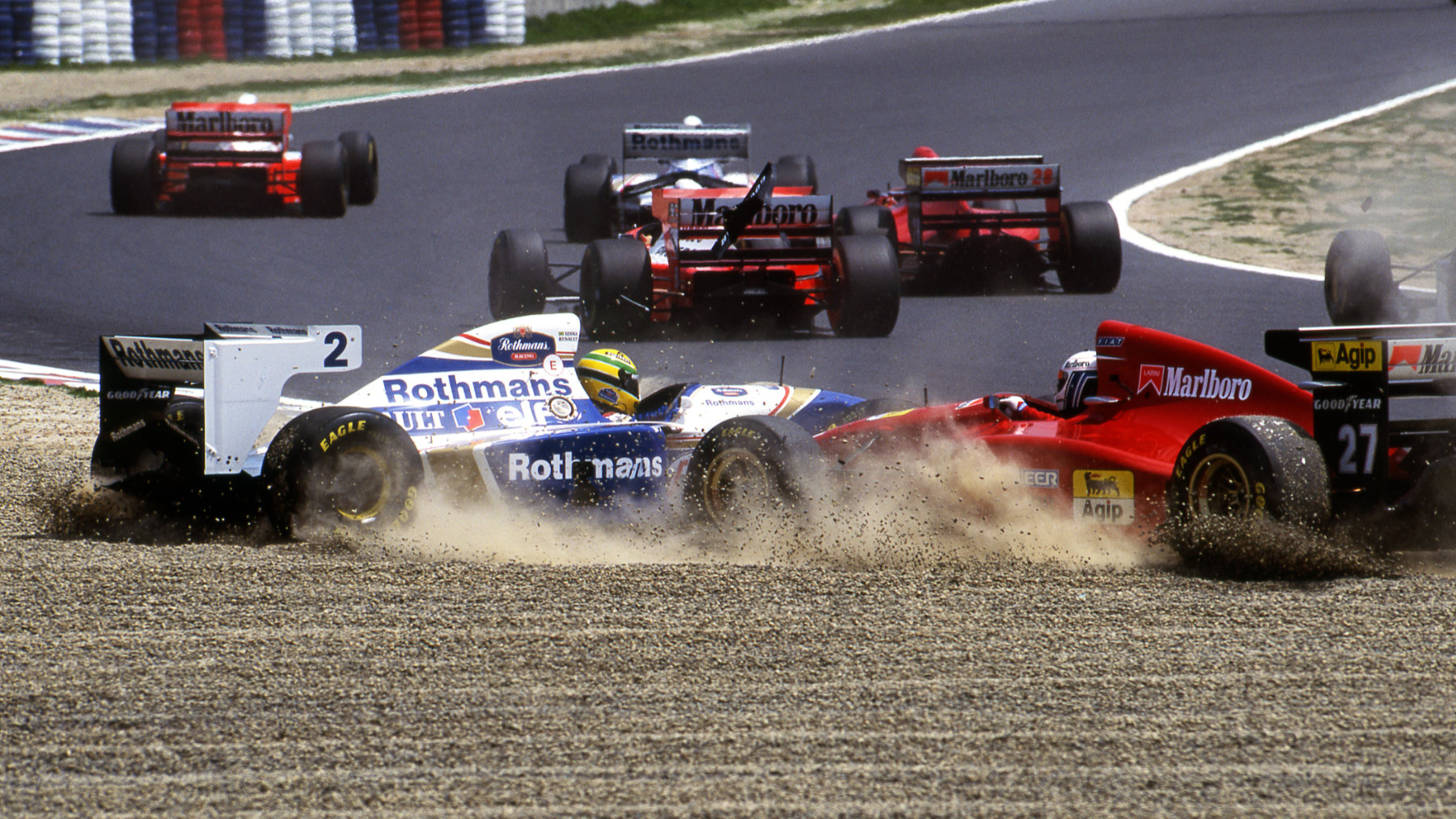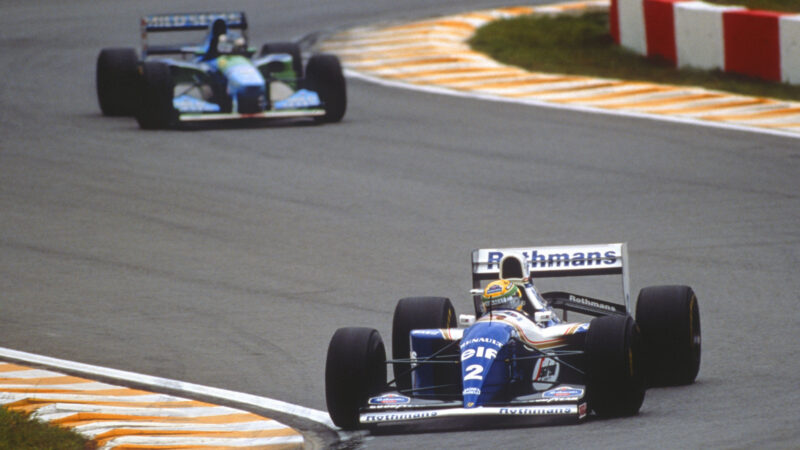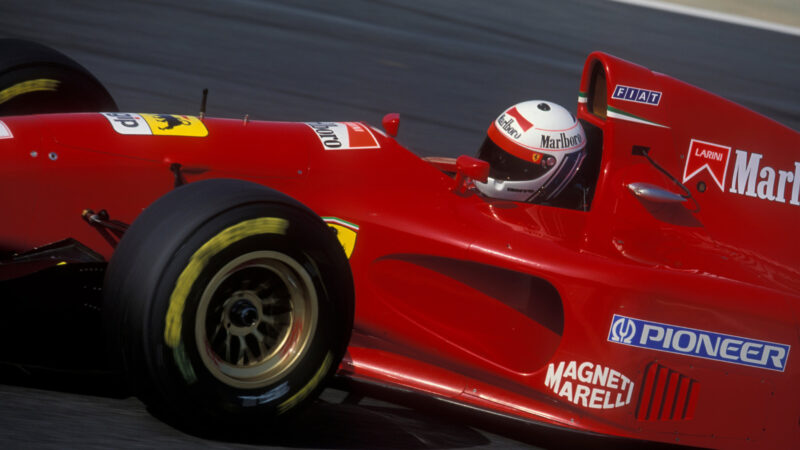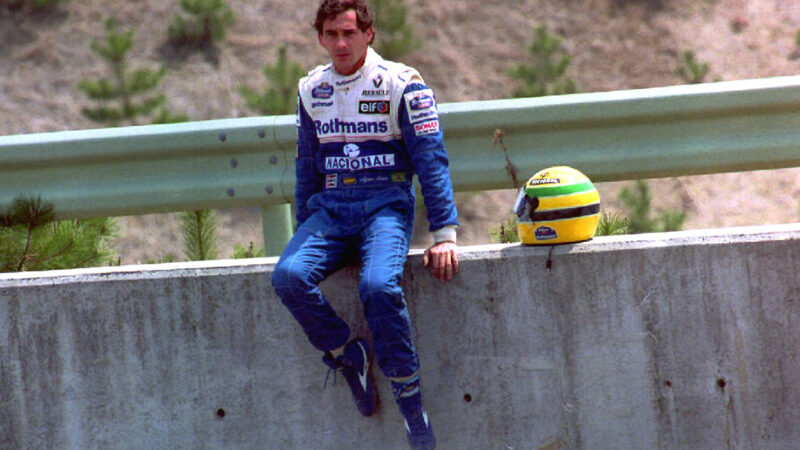Whenever we cast our minds back to the early grands prix of the 1994 Formula 1 season, inevitably our thoughts turn to the third of those races, the San Marino Grand Prix, because of the tragic deaths of Roland Ratzenberger on the Saturday and Ayrton Senna on the Sunday. Their anniversaries are approaching: April 30 (Ratzenberger) and May 1 (Senna).
The two grands prix before that wretched Imola weekend were run at Interlagos on March 27 and at Aida on April 17. The anniversary of the second of the two, which took place in Japan but was called the Pacific Grand Prix, is therefore even more imminent: the day after tomorrow.
Senna (Williams) took the pole for both races – as indeed he would at Imola – but Michael Schumacher (Benetton) won all three. At Interlagos, Senna’s home circuit, in his native São Paulo, the local hero led at the start, but he was not happy with his Williams’ handling, he was unable to pull away from Schumacher therefore, and, when the Benetton pitcrew performed their first pitstop faster than the Williams boys had completed theirs, it was enough for their man to steal the lead. Thereafter Michael edged away from Ayrton, little by little, lap by lap.
On their first tour after the second round of pitstops Schumacher’s lead was 9.2sec – but Senna, buoyed as he admitted he often was by the passionate and rowdy support of his tens of thousands of adorers on the bleachers all around the circuit, inexorably began to close. With 15 laps to go Ayrton had halved Michael’s lead, and now the spectators were becoming inspired – no, make that consumed – by a yearning desire that, yes, their man might just take the win in a thrilling grandstand finish.
Inside the two cars, Senna was working harder than Schumacher was. The Benetton looked smooth, controllable, and forgiving. By contrast the Williams was twitching its way around the daunting curves of Interlagos, and one felt that it was only Ayrton’s genius that was even allowing it to stay in touch with, let alone close on, the Benetton ahead. Indeed, illustrating just how mighty was Senna’s superintendence of that tricky car that afternoon, he had lapped his team-mate, Damon Hill, by two-thirds distance.
Schumacher chases Senna at Interlagos, but the Brazilian would retire
Grand Prix Photo
As the race wore on, Senna became ever more visibly on it, leaving no margin anywhere now, pushing his Williams just as hard as it would go. So in truth it was no surprise – even if it was a shock, if that apparent contradiction in terms makes sense – when he spun off at Juncao, the deceptively difficult left-hander, near the end of lap 56, with just 14 to go. Schumacher immediately backed off, cruising the last 32 miles (52km) to victory in front of a dejected and silent crowd.
Three weeks later, at Aida, the story began in much the same way. Again Senna took the pole, and again Schumacher qualified alongside him. However, on race day the script changed. Schumacher made a great start, and he led straight away. Senna, whose getaway had been sluggish by comparison, was hit from behind by Mika Häkkinen (McLaren) at the first corner, which contact nerfed his Williams onto the gravel. In turn, Nicola Larini, whose Ferrari had been forced wide in the first-lap first-corner melee — par for the course on a circuit so narrow — was unable to avoid T-boning Senna’s stationary Williams. Häkkinen got going again, but Senna’s and Larini’s races were both ended on the spot.
There was irony in the coming-together of Senna and Larini because, the day before, the Ferrari man had leaked to a number of Italian journalists the spicy tidbit that he had tested a traction control system in one of the practice sessions earlier that weekend. Practice is practice, so no rule had been broken unless the system had been retained for qualifying and/or the race, and no one was suggesting that it had been.
Nonetheless, it was odd, and suspicious, and it caused angry tongues to wag up and down pitlane and paddock alike, for traction control was illegal in F1 in 1994, one of the driver aids that had been banned at the end of 1993. Larini later denied that he had been the author of the leak, but a number of reputable Italian pressmen insisted that he had been.
Nicola Larini, Ferrari driver and whistleblower
Grand Prix Photo
However, Ferrari was not the only team about which rumours of illegal traction control systems were circulating. Trackside photographers had returned from Friday’s practice sessions telling stories of hearing from Schumacher’s Benetton, but not from that of his team-mate Jos Verstappen, the tell-tale sounds of what had reminded them of the traction control systems that had modulated throttle deployment on F1 cars in recent years. Adding circumstantial evidence to the plot was the comparative qualifying performances of the two Benetton drivers. OK, granted, Verstappen, an F1 rookie in 1994, was not as quick as Schumacher – no one would claim that — but he was no slouch. Yet Jos’s qualifying time had been 1.893sec slower than Michael’s at Interlagos and, here at Aida, it was 2.114sec slower.
Senna smelled a rat. So it was that, as he climbed out of his broken Williams at Aida’s Turn 1, his Pacific Grand Prix having lasted just six seconds, instead of walking back to the pits he spoke a few words with Larini, then he stayed trackside to watch — and listen — for a quarter of an hour.
What was the nub of the conversation that had passed between them? Well, I think we know. It would not have been their shunt, for poor Nicola had been blameless in their coming-together – congestion in the middle of Turn 1 had left him with no way of avoiding a collision with Ayrton’s stricken Williams – and, besides, the author of Senna’s downfall had been Häkkinen, not Larini. No, they would have been talking about traction control. Or, to be more accurate, Senna would have been grilling Larini on the subject.
Senna’s eyes and ears open as he sits trackside at the Pacific GP
Pascal Rondeau/Allsport via Getty Images
Two weeks later the controversy was raised to the power of tragedy, for, in the days before he died at Imola, Senna had made it known to confidants that he felt he was competing in a legal car against an illegal one. He may well have been mistaken – obviously the Benetton engineers stoutly deny it to this day, and it was never proved, despite persistent rumours — but, even so, and even now, 31 long years later, it is devastating to think that the greatest driver of his or perhaps any era died trying to fend off the relentless advance of a car that he suspected of being hooky-crooky.
There is pathos, too, in the endings of all three grands prix that Senna started for Williams, for he finished none of them. At Interlagos he spun off, at the very apogee of his form, controlling a difficult car on the ragged edge as almost no one had done before or would do again; at Aida, through no fault of his own, he was punted out by a rival; and at Imola he was killed. The last race he therefore lived to recall was run on a racetrack that will always be but a footnote in the F1 history books: the Okayama International Circuit, at Aida, near the small and nondescript city of Mimasaka, which nestles among forests and hills, in the middle of nowhere according to F1’s small posse of Japanese journalists, and where heavy snowfall is common in winter.



